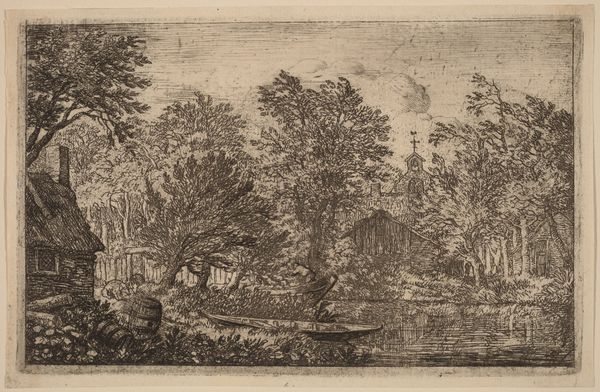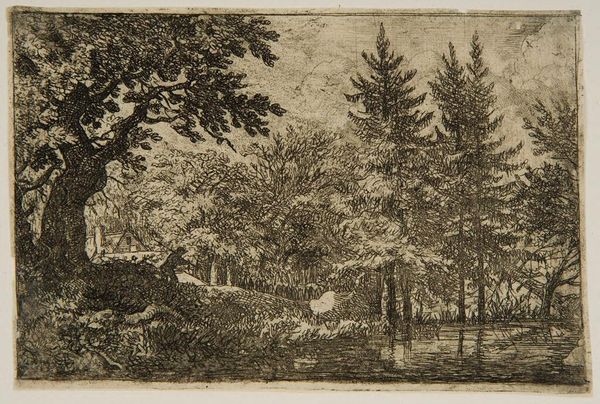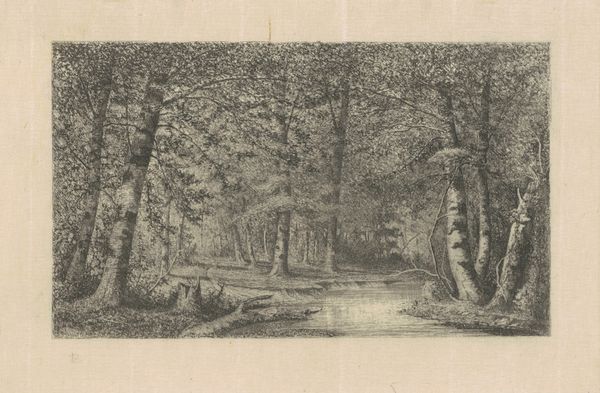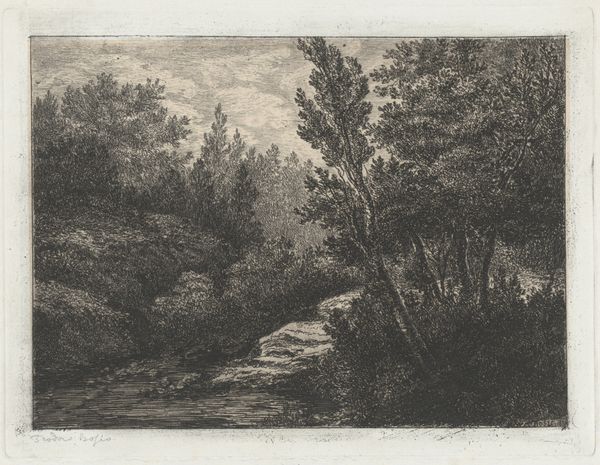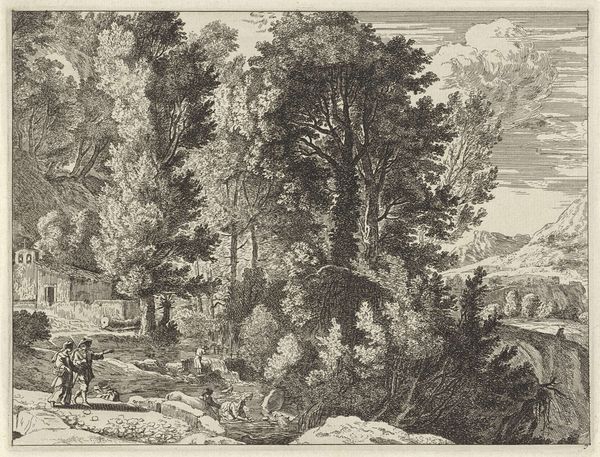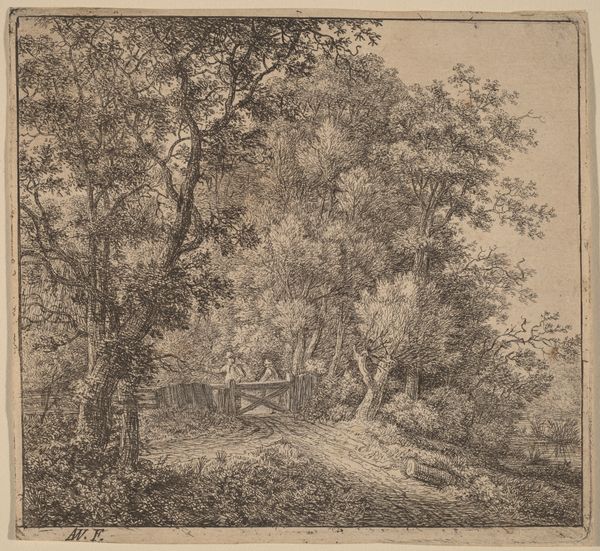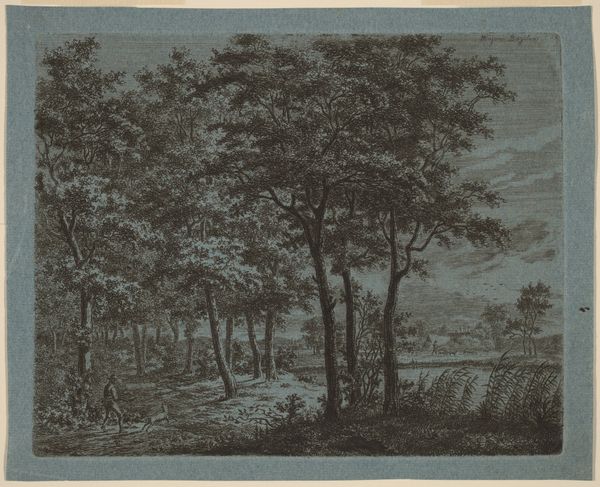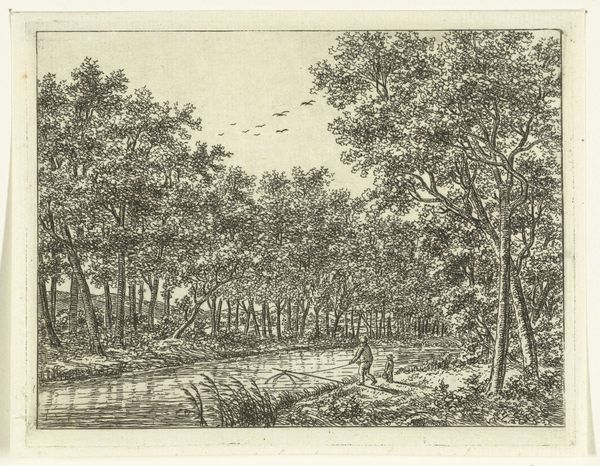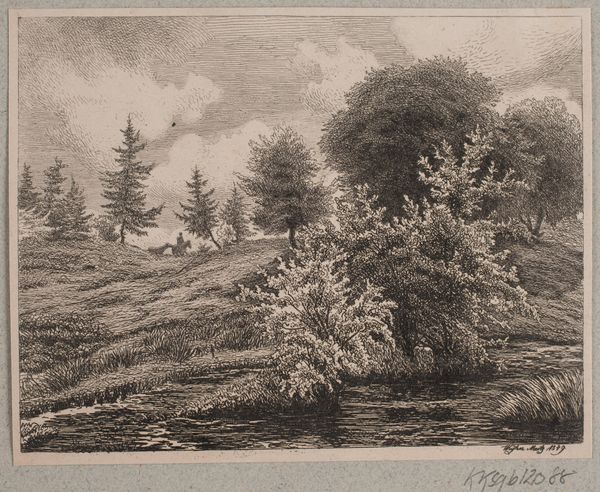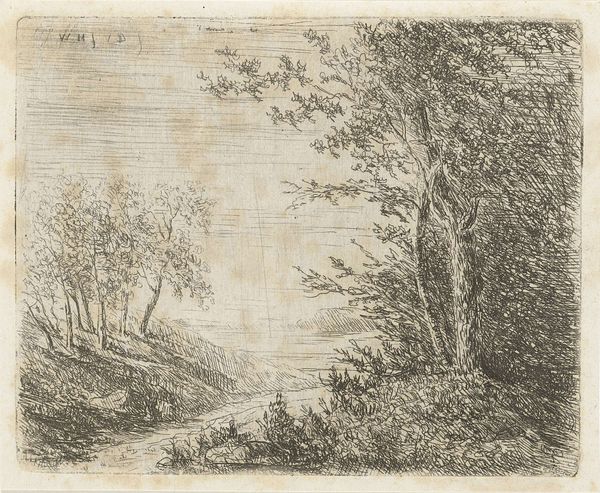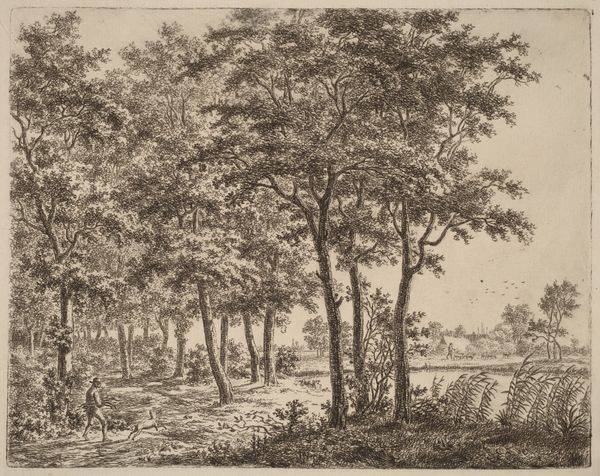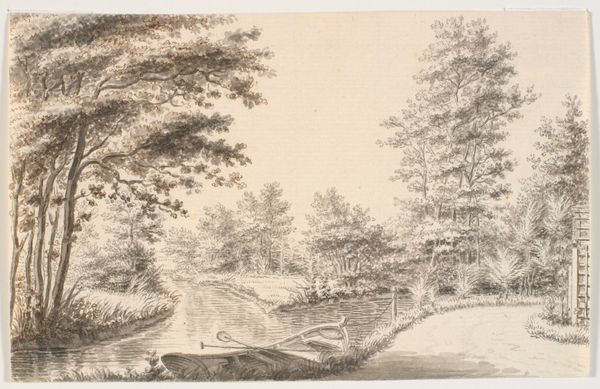
print, etching
#
dutch-golden-age
# print
#
etching
#
landscape
#
etching
#
realism
Copyright: National Gallery of Art: CC0 1.0
Editor: This etching, *Fir Trees at the Water*, by Allart van Everdingen, was created around 1645-1656. The textures created with simple lines make it feel so dense. What kind of atmosphere or meaning do you think Van Everdingen was trying to convey? Curator: The landscape is charged with a kind of collective memory. The deliberate placement of the fir trees, traditionally symbols of steadfastness and endurance, at the water's edge creates a compelling narrative of nature’s resilience. How does the reflection in the water impact your interpretation? Editor: It almost doubles the weight of the forest, like a shadowed world beneath the surface. Do you see connections to folklore in this piece? Curator: Precisely. Consider the folklore surrounding water – often a threshold to other realms, and the trees which were used in many rites and rituals. Van Everdingen's combination subtly alludes to these long-held beliefs, positioning the natural world as something imbued with spiritual significance. Does the scale of the human figures relate? Editor: Good point. They’re quite small in relation to the trees; perhaps they represent humanity's small place within a much larger, timeless world? I didn’t notice how carefully the image positions the trees, until now. Curator: These landscapes operate almost as a visual repository. Each element contributes to a rich symbolic context. So, the composition echoes cultural continuity. Editor: This has offered me new way to consider natural settings in the work of this period, thank you.
Comments
No comments
Be the first to comment and join the conversation on the ultimate creative platform.
